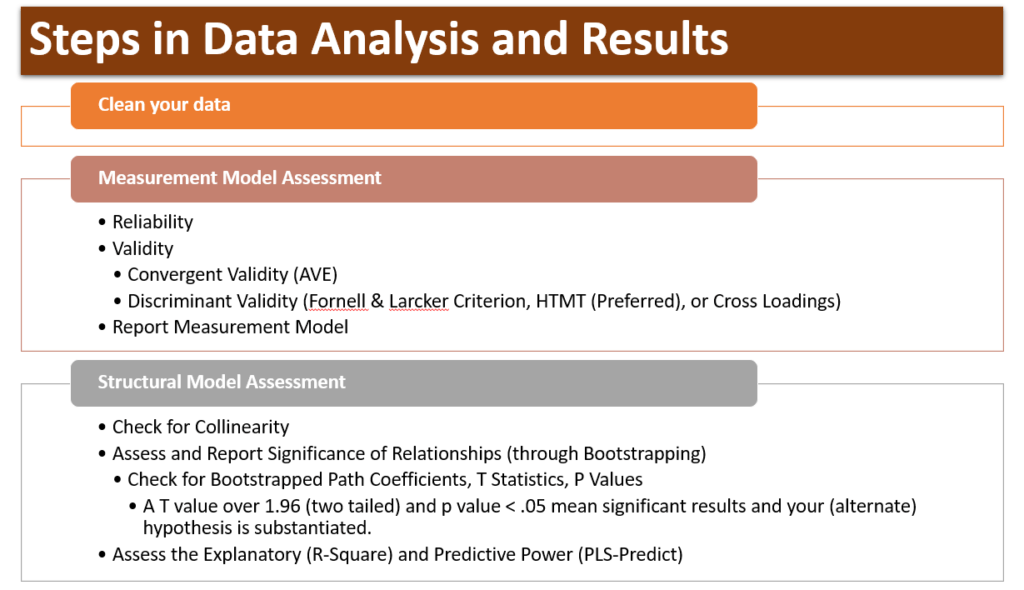
How to Perform Data Analysis - A Step by Step Approach
The short session guides on the steps for data analysis when using Structural Equation Modelling.
This article provides a step-by-step approach to data analysis using Structural Equation Modeling (SEM). SEM is a powerful analytical technique used in various fields to examine complex relationships among variables. The subsequent sections delineate the sequential steps involved in SEM data analysis, encompassing data cleaning, measurement model assessment, and structural model assessment.

The short session guides on the steps for data analysis when using Structural Equation Modelling.
The first step in SEM data analysis is data cleaning. This step ensures that the dataset is free from errors, outliers, and inaccuracies that may compromise the validity of subsequent analyses. The importance of data cleaning is underscored, and a link to a dedicated video on data cleaning is provided later in the tutorial.
Following data cleaning, researchers must assess the measurement model, which involves evaluating the quality of the measures used in the study. This assessment comprises several key components: reliability, convergent validity, and discriminant validity. The article emphasizes the significance of these assessments in ensuring that the measures are robust and reliable.
Once the measurement model has been rigorously assessed, the focus shifts to the structural model assessment. Here, researchers examine the relationships between different constructs in the study, testing hypotheses and assessing their significance. The process begins with a check for collinearity, ensuring that multicollinearity issues do not affect the results. Subsequently, researchers evaluate the significance of relationships using bootstrapping procedures, path coefficient t statistics, and b values. The article provides clarity on the interpretation of p-values and t statistics, setting a threshold for statistical significance. It further discusses the reporting of explanatory R-squared and predictive power, crucial aspects of SEM analysis. Links to pertinent videos are furnished in the description to guide researchers through each facet of structural model assessment.
In conclusion, this article serves as a comprehensive guide to data analysis using Structural Equation Modeling. The step-by-step approach outlined herein, from data cleaning to structural model assessment, forms the bedrock of SEM analysis. Researchers embarking on SEM data analysis for their theses or research papers will find this elucidation invaluable. Supplementary videos corresponding to each step, shared in the description, offer in-depth insights and methodological guidance. By following this systematic approach, researchers can conduct rigorous SEM data analysis and derive meaningful insights from their research endeavors.

Step by Step Approach to Data Analysis using Structural Equation Modelling (See Description). The short session guides on the steps for data analysis when using Structural Equation Modelling.
What is SEM?
https://youtu.be/H0d5LZ9Bs64
https://youtu.be/15hxvI2bSJg
Data Cleaning
https://youtu.be/dZdIiEsgHWE
The Complete Playlist for Structural Equation Modelling tools like SmartPLS, IBM SPSS AMOS, and SEMinR. The videos are ordered.